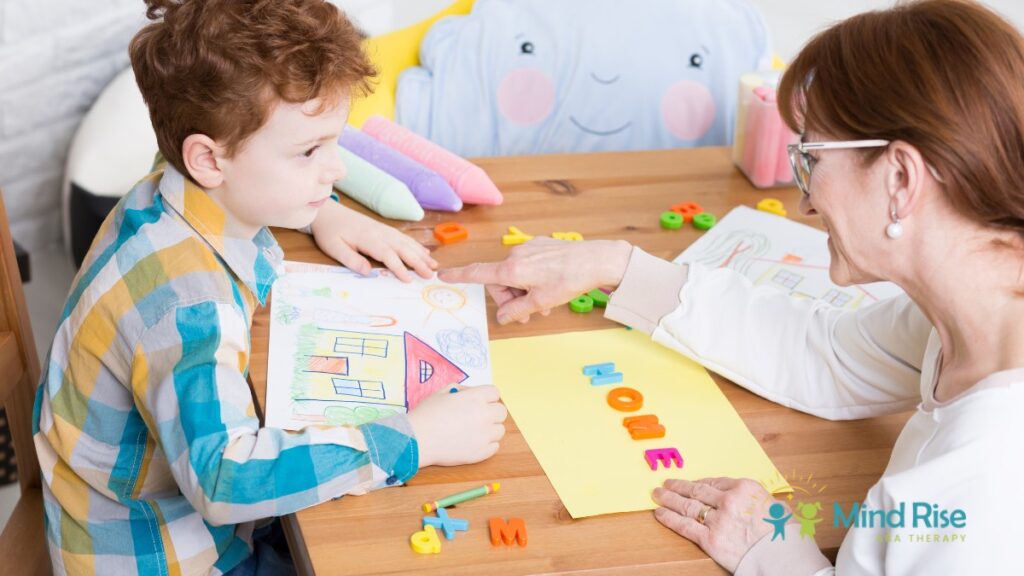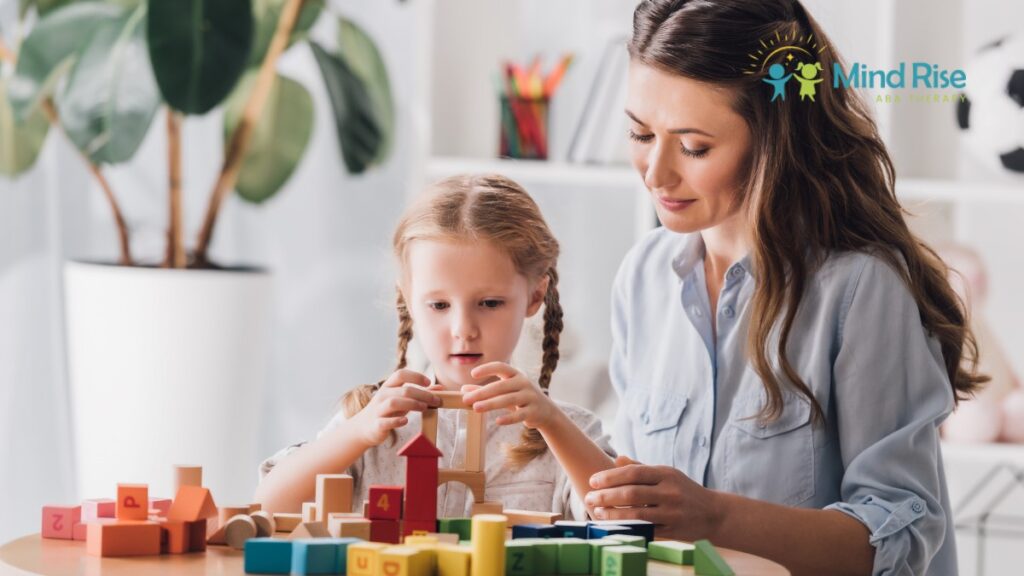Key Points:
- In-home ABA therapy in Virginia offers customized support for children in a comfortable, familiar environment.
- Parents can expect structured sessions, active involvement, and clear communication with the therapy team.
- Knowing the flow of therapy and what roles each team member plays helps families set realistic expectations and goals.
If you’re a parent in Virginia exploring in-home ABA therapy, you’re likely feeling hopeful—and maybe a little unsure of what to expect. That’s completely normal. In-home ABA therapy is a personalized, family-centered way to support children with autism using Applied Behavior Analysis techniques, right where daily life happens. ABA therapy providers in Virginia, like Mind Rise ABA, are helping families bring effective interventions into their homes with routines that fit real life.
In this article, we’ll walk you through what in-home ABA therapy looks like from start to finish: how it begins, what sessions involve, how you’ll be involved as a parent, and how progress is tracked. We’ll also share tips for getting the most out of the process so you feel confident, prepared, and supported.
What Is In-Home ABA Therapy?
In-home ABA therapy is exactly what it sounds like—ABA services delivered in the child’s home instead of a clinic. It’s designed to help children with autism or related developmental differences build skills where they’re most comfortable. This format allows therapists to work directly on challenges that come up in daily life—mealtimes, bedtime routines, play skills, communication, and more.
Unlike center-based therapy, in-home sessions focus heavily on real-world learning. The environment is familiar, which can help reduce anxiety and improve generalization (using skills in different places and situations). It also means parents and caregivers are more easily involved.
The Evaluation and Intake Process
Before therapy begins, there’s a structured intake and assessment process to ensure the services are appropriate and personalized. This is a critical step where we—as your ABA provider—gather the information we need to develop a plan that works for your child and your family.
Here’s what the process usually includes:
- Initial Consultation
A phone call or meeting to discuss your child’s diagnosis, current behaviors, and your goals for therapy. - Insurance Verification & Authorization
We’ll work with your insurance provider to confirm coverage and obtain pre-authorization. - Functional Behavior Assessment (FBA)
A BCBA (Board Certified Behavior Analyst) visits your home to observe your child, gather data, and conduct caregiver interviews. - Individualized Treatment Plan
Based on the FBA, your BCBA writes a treatment plan that outlines goals, strategies, and how progress will be measured.
What a Typical Session Looks Like
Understanding what happens during an in-home ABA therapy session can take away a lot of the guesswork. Sessions are structured but flexible, adapting to your child’s needs and your family’s routines.
Expect the following core components:
- Warm-up and Rapport Building
The RBT (Registered Behavior Technician) may start with a few minutes of play or conversation to help your child transition into therapy mode. - Skill-Based Instruction
This includes working on specific goals like communication, social interaction, self-help tasks, or behavior reduction. - Data Collection
The therapist will document your child’s responses to interventions. This helps track progress and adjust the plan as needed. - Parent Collaboration
Depending on your schedule, the therapist may briefly update you at the end of each session. More in-depth check-ins happen during scheduled parent training with your BCBA. - Natural Environment Teaching (NET)
Skills are often taught in real-world situations—like brushing teeth in the bathroom, or taking turns during playtime with a sibling.
Sessions typically last 2–4 hours and happen several times per week, depending on the treatment plan and your availability.
Who’s on Your In-Home ABA Team?

Knowing who’s who helps clarify expectations and communication. In ABA therapy, there are usually two main professionals you’ll interact with:
- BCBA (Board Certified Behavior Analyst)
- Designs and oversees the treatment plan.
- Conducts regular assessments and updates goals as your child progresses.
- Trains both the RBT and you (the caregiver) to ensure consistency.
- Usually meets with families 1–2 times per month for parent training and plan updates.
- RBT (Registered Behavior Technician)
- Implements the therapy plan during day-to-day sessions.
- Works directly with your child on goals.
- Collects data and communicates regularly with the BCBA.
Having both professionals involved ensures that the therapy remains effective and responsive to your child’s changing needs.
Your Role as a Parent or Caregiver
In-home ABA therapy works best when families are active participants. You’re not just a bystander—you’re part of the team. That doesn’t mean you need to become a behavior expert, but your involvement will help generalize skills beyond the therapy sessions.
Here’s what parent involvement might include:
- Attending regular check-ins with the BCBA.
- Practicing strategies between sessions.
- Providing feedback about what’s working (or not) in everyday routines.
- Advocating for goals that reflect your child’s real-life challenges and successes.
At Mind Rise ABA, we prioritize this kind of collaboration. You know your child best—and that insight is essential.
Benefits of In-Home ABA Therapy for Virginia Families
In-home ABA services offer several advantages for families in Virginia, especially when compared to more structured clinic settings.
Here are a few key benefits:
- Convenience
No commuting means more time for other family activities—and less disruption to your schedule. - Personalized Environment
Therapists can directly target behaviors that happen at home, in real-time. - Stronger Family Involvement
Because you’re close by, it’s easier to see what’s happening and to ask questions. - Improved Skill Generalization
Your child learns in the same context where they’ll need to use those skills day to day.
Common Concerns Parents Have—and What to Know

Starting in-home ABA therapy often comes with questions and concerns. Here are a few we hear often, along with some insight:
- Will therapy disrupt our home life?
It can feel like a big change at first, but sessions are designed to work around your routine, not against it. You’ll always have a say in scheduling and how therapy flows. - Do I need to “prepare” my house?
No major changes needed. Your therapist may suggest some small environmental adjustments (like reducing distractions in a specific room), but the goal is to work within your current setup. - What if my child resists working with someone new?
That’s completely normal. Building rapport is a part of therapy. The RBT will use play-based techniques to ease into sessions and gain your child’s trust. - How will I know if it’s working?
You’ll receive regular updates, data reports, and progress summaries from your BCBA. If something isn’t working, adjustments are made quickly.
Tips for Getting the Most Out of In-Home ABA
To help your child make the most progress—and for you to feel fully supported—there are a few simple things you can do:
- Be Consistent with Scheduling
Keeping sessions on a regular routine helps your child build predictability and stay engaged. - Communicate Openly
Share successes, challenges, or changes in your child’s routine. The more your therapy team knows, the better they can help. - Participate in Parent Training
These sessions are designed for you—to teach techniques you can use outside of therapy. - Celebrate Small Wins
Progress isn’t always dramatic, but every new skill counts. Recognizing small steps can keep everyone motivated. - Ask Questions
If you’re unsure why something is being done—or how—it’s okay to ask. We welcome that kind of curiosity.
Final Thoughts
In-home ABA therapy in Virginia can be a game-changer—not just for your child, but for your entire family. The home setting brings comfort, familiarity, and flexibility, allowing therapy to blend naturally into your daily life. It also offers a powerful way to tackle real-life behaviors, improve communication, and build practical skills where they matter most.
At Mind Rise ABA, we believe that effective therapy happens through collaboration, trust, and personalization. Our in-home ABA services are built around your family’s goals, routines, and values—so your child can thrive in the place they know best.
Get in touch today to learn how our ABA therapy in Virginia can support your child’s growth—right at home.

